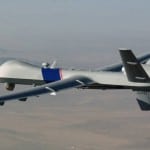
After failed efforts nearly a decade ago to develop technology that could quickly and effectively scan a person’s shoes at an airport security checkpoint, the Department of Homeland Security is again examining shoe scanning technology and is planning to begin prototype testing later this year. The department’s Science and Technology Directorate, working with the Department of Energy’s Pacific Northwest National Laboratory (PNNL), has spent the last two years developing the millimeter wave-based system and expects to test it with the…

 By
By 








